
Roger William Corman is an American film director, producer, and actor. Known under various monikers such as "The Pope of Pop Cinema", "The Spiritual Godfather of the New Hollywood", and "The King of Cult", he is known as a trailblazer in the world of independent film. Many of Corman's films are low-budget cult films including some which are adapted from the tales of Edgar Allan Poe.

The Fast and the Furious is a 1954 American crime drama B movie starring John Ireland and Dorothy Malone, co-directed by Ireland and Edward Sampson.
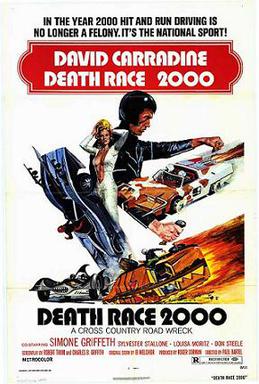
Death Race 2000 is a 1975 American science fiction action film produced by Roger Corman, directed by Paul Bartel, and starring David Carradine. The film takes place in a dystopian American society in the year 2000, where the murderous Transcontinental Road Race has become a form of national entertainment. The screenplay is based on the short story The Racer by Ib Melchior.
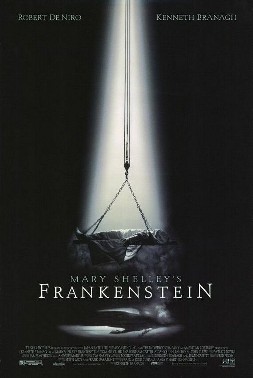
Mary Shelley's Frankenstein is a 1994 science fiction horror film directed by Kenneth Branagh who also stars as Victor Frankenstein, with Robert De Niro portraying Frankenstein's monster, and co-stars Tom Hulce, Helena Bonham Carter, Ian Holm, John Cleese, Richard Briers and Aidan Quinn. Considered the most faithful film adaptation of Mary Shelley's 1818 novel, Frankenstein; or, The Modern Prometheus, despite several differences and additions in plot from the novel, the film follows a medical student named Victor Frankenstein who creates new life in the form of a monster composed of various corpses' body parts.

Victor Frankenstein is a fictional character and the main protagonist and title character in Mary Shelley's 1818 novel, Frankenstein; or, The Modern Prometheus. He is a Swiss scientist who, after studying chemical processes and the decay of living things, gains an insight into the creation of life and gives life to his own creature. Victor later regrets meddling with nature through his creation, as he inadvertently endangers his own life and the lives of his family and friends when the creature seeks revenge against him. He is first introduced in the novel when he is seeking to catch the monster near the North Pole and is saved from near death by Robert Walton and his crew.

The Wild Angels is a 1966 American independent outlaw biker film produced and directed by Roger Corman. Made on location in Southern California, The Wild Angels was the first film to associate actor Peter Fonda with Harley-Davidson motorcycles and 1960s counterculture. It inspired the biker film genre that continued into the early 1970s.

Identity Crisis is a 1989 comedy film directed by Melvin Van Peebles. Written by Mario Van Peebles, the film is about a rapper who winds up sharing his body with the soul of a dead fashion designer, switching between personalities every time he is struck on the head.
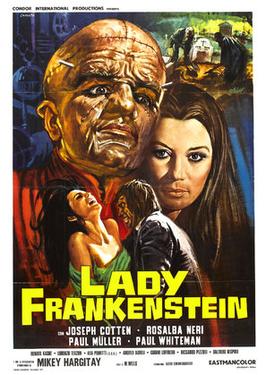
Lady Frankenstein is a 1971 Italian horror film directed by Mel Welles and written by Edward di Lorenzo. It stars Rosalba Neri, Joseph Cotten, Mickey Hargitay and Paul Müller.
Nicholas Brimble is an English actor whose long career has spanned theatre, television, film, and voice work.

Mary Shelley's 1818 novel Frankenstein; or, The Modern Prometheus, and the famous character of Frankenstein's monster, have influenced popular culture for at least a century. The work has inspired numerous films, television programs, video games and derivative works. The character of the Monster remains one of the most recognized icons in horror fiction.
Armando Nannuzzi was an Italian cinematographer and camera operator active from the 1940s until the 1990s. His career spanned six decades and over 100 films.

The Terror Within is a 1989 American science fiction horror film directed by Thierry Notz and starring George Kennedy, Andrew Stevens, Starr Andreeff and Terri Treas. It was followed by a sequel in 1991, The Terror Within II, with Stevens reprising his starring role while also handling the film's writing and directing duties.

Von Richthofen and Brown, alternatively titled The Red Baron, is a 1971 war film directed by Roger Corman and starring John Phillip Law and Don Stroud as Manfred von Richthofen and Roy Brown. Although names of real people are used and embedded in basic historic facts, the story by Joyce Hooper Corrington and John William Corrington makes no claim to be historically accurate, and in fact is largely fictional.
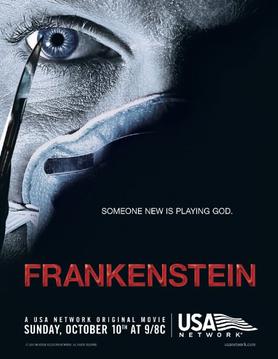
Frankenstein is a 2004 American science fiction horror television film produced and directed by Marcus Nispel and written by John Shiban. It is a loose adaptation of Mary Shelley's Frankenstein, and stars Parker Posey as a police detective on the trail of a serial killer, played by Thomas Kretschmann, in present-day New Orleans. The detective is aided in her search by one of the killer's creations, played by Vincent Perez. Adam Goldberg, Ivana Miličević and Michael Madsen co-star. It was produced by Lions Gate Films, and aired on the USA Network on October 10, 2004.

Monster from the Ocean Floor is an American 1954 science fiction film about a sea monster that terrorizes a Mexican cove. The film was directed by Wyott Ordung and starred Anne Kimbell and Stuart Wade.
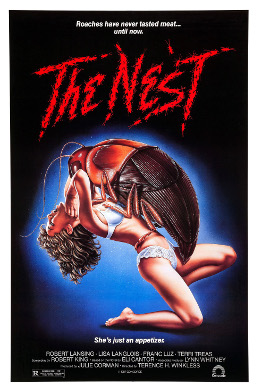
The Nest is an 1988 American science-fiction horror film directed by Terence H. Winkless in his directorial debut. Based on the 1980 novel of the same name by Eli Cantor, the film's screenplay was written by Robert King. The film was produced by Julie Corman and stars Robert Lansing, Lisa Langlois, Franc Luz, and Terri Treas.

Frankenstein; or, The Modern Prometheus is an 1818 novel written by English author Mary Shelley. Frankenstein tells the story of Victor Frankenstein, a young scientist who creates a sapient creature in an unorthodox scientific experiment. Shelley started writing the story when she was 18, and the first edition was published anonymously in London on 1 January 1818, when she was 20. Her name first appeared in the second edition, which was published in Paris in 1821.

Apache Woman is a 1955 American Western directed by Roger Corman and starring Lloyd Bridges. It was Corman's second film as director, following Five Guns West. It was one of four Westerns he made for American International Pictures, the other being Five Guns West, The Oklahoma Woman (1955) and Gunslinger (1956). Corman says Apache Woman and Oklahoma Woman were from ideas by AIP whereas the others were his ideas. This was the first film from Golden State Productions, a company headed by Alex Gordon.

The Frankenstein Theory is a 2013 American horror film directed by Andrew Weiner and stars Kris Lemche, Joe Egender, Timothy V. Murphy, and Eric Zuckerman. The film is distributed by Image Entertainment. It is presented as "found footage", pieced together from a film crew's footage. The film relates the story of a documentary film crew that follows a professor who journeys to the Arctic Circle in order to prove that Mary Shelley's classic 1818 novel, Frankenstein; or, The Modern Prometheus, was based on fact.

The Bride of Frankenstein is a fictional character first introduced in Mary Shelley's 1818 novel Frankenstein; or, The Modern Prometheus and later in the 1935 film Bride of Frankenstein. In the film, the Bride is played by Elsa Lanchester. The character's design in the film features a conical hairdo with white lightning-trace streaks on each side, which has become an iconic symbol of both the character and the film.


















